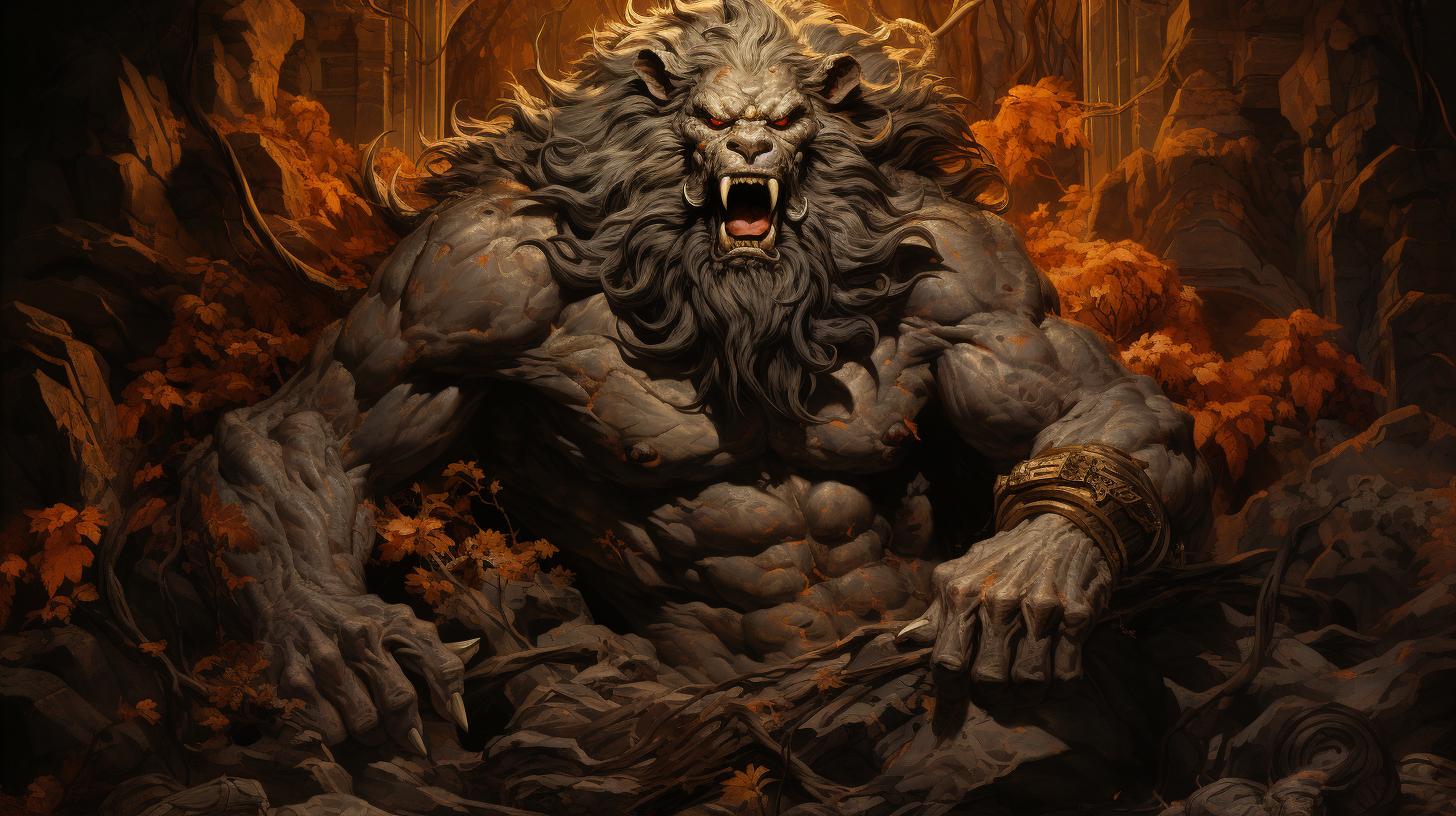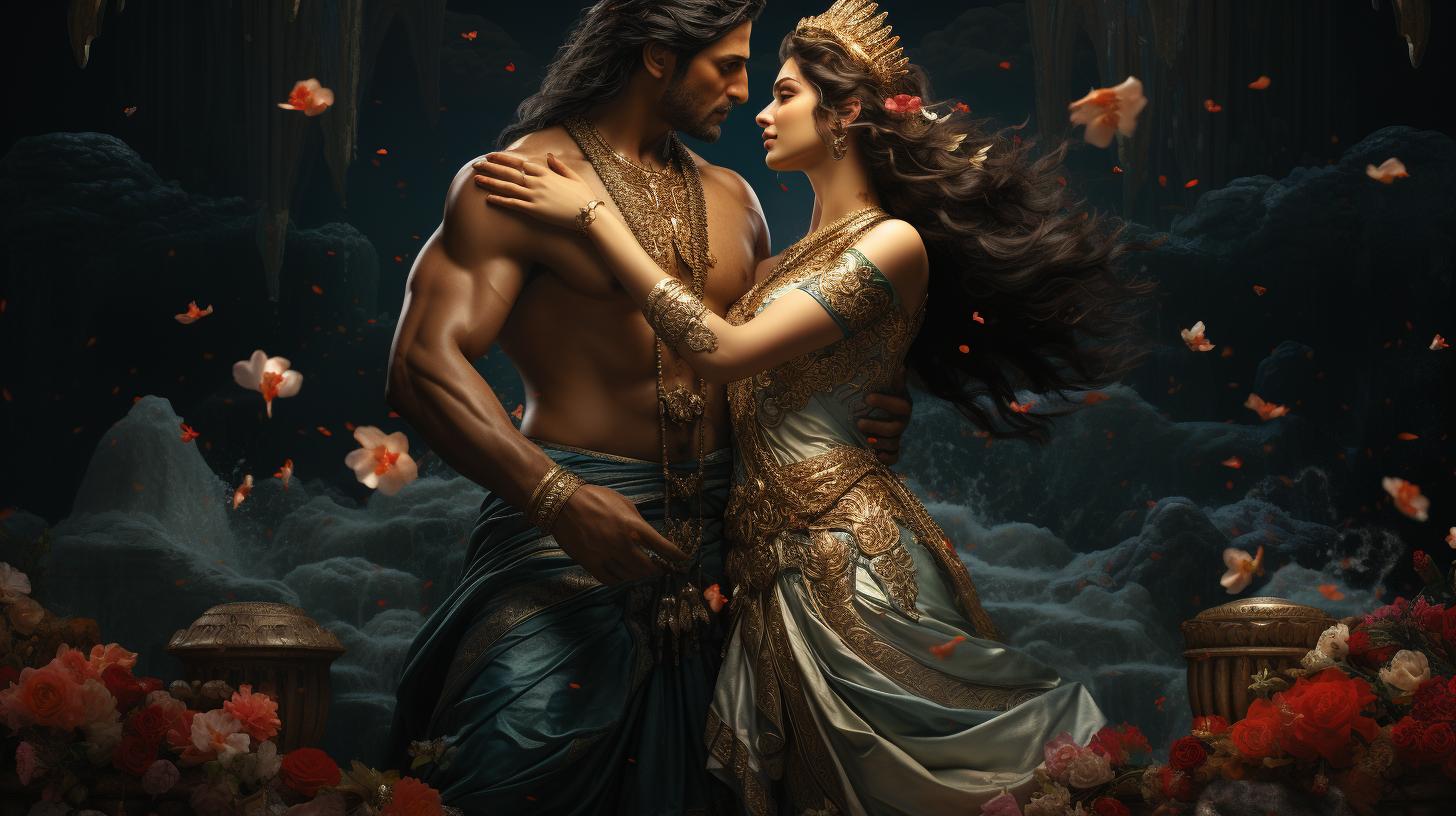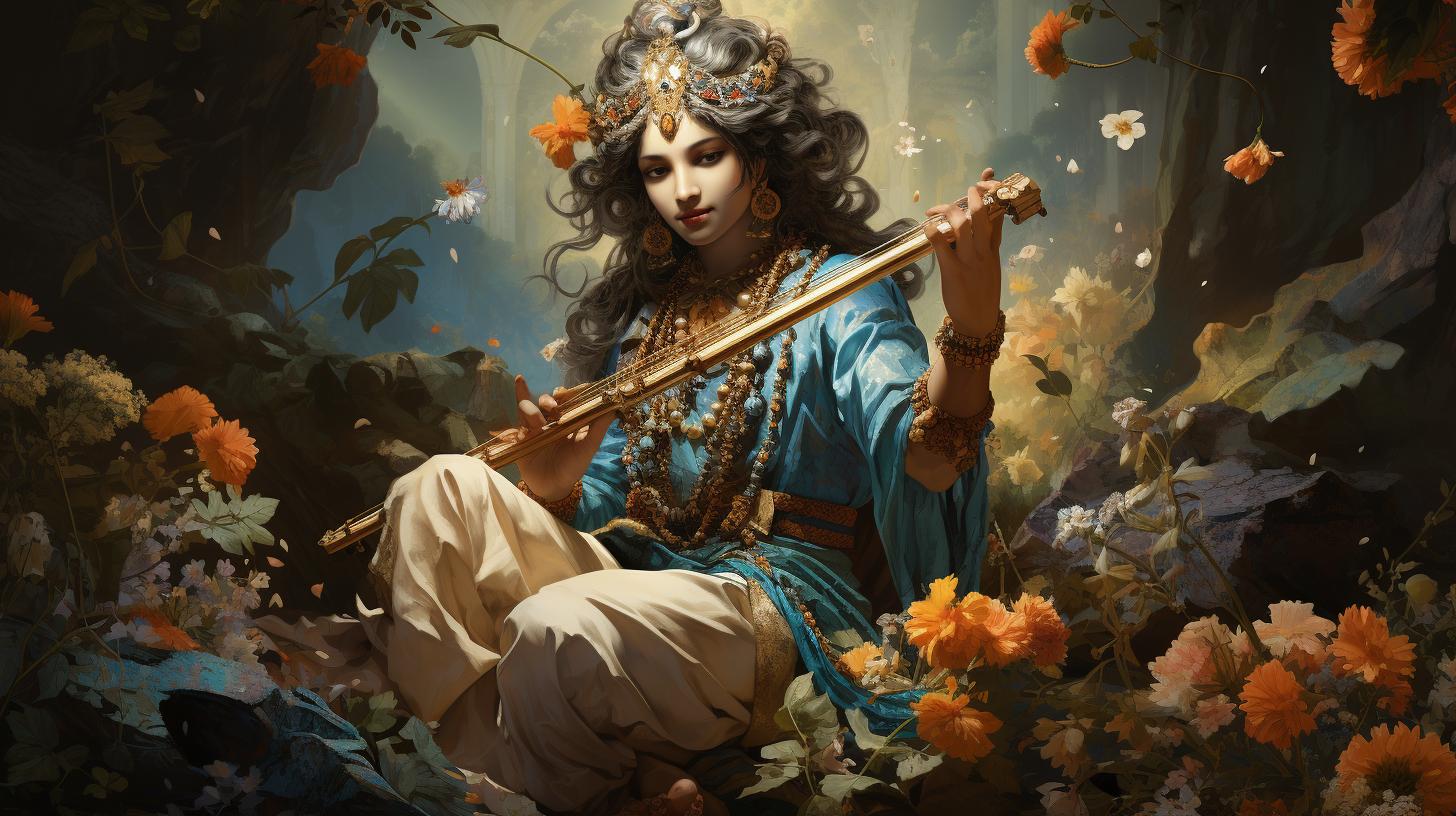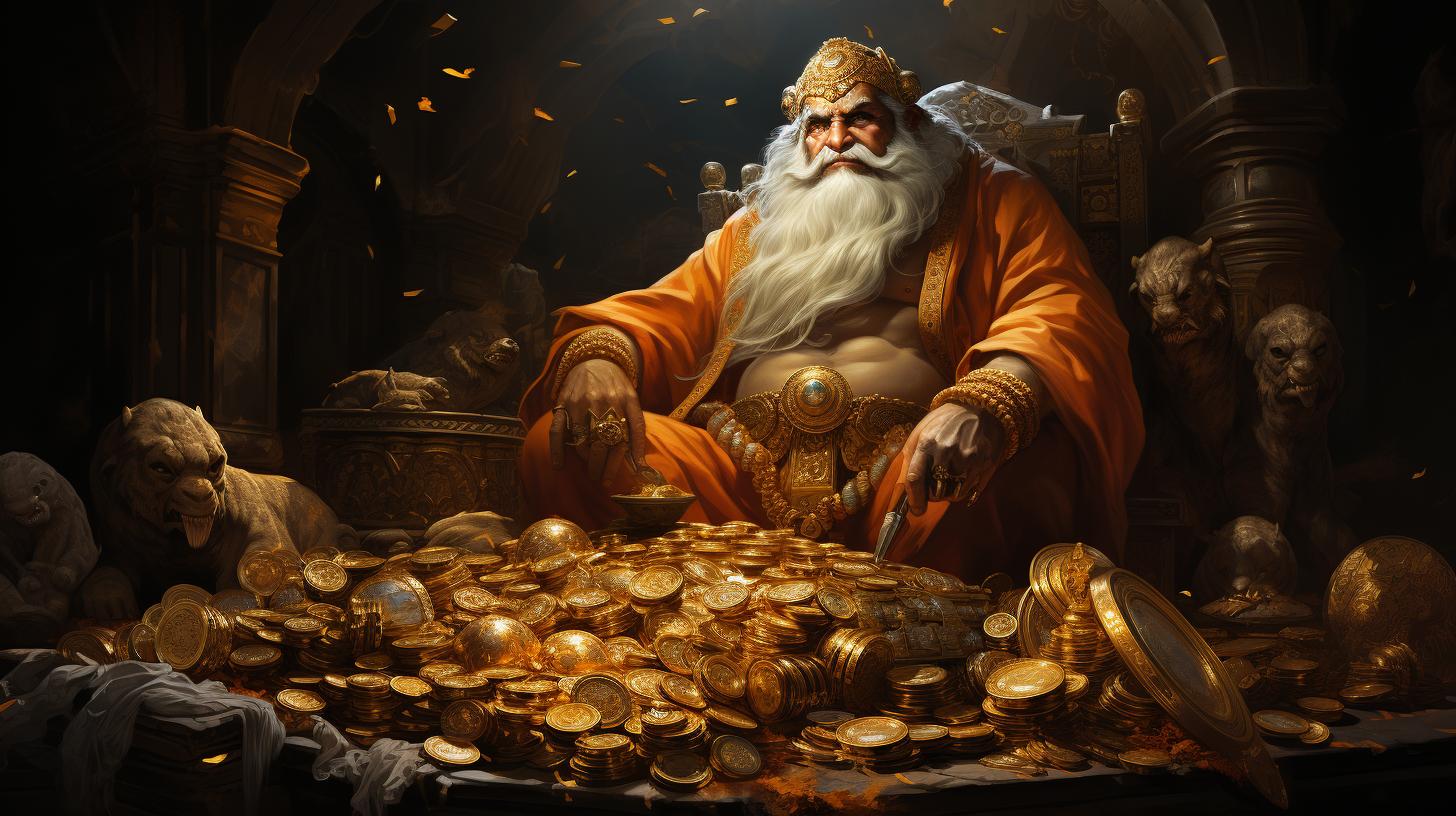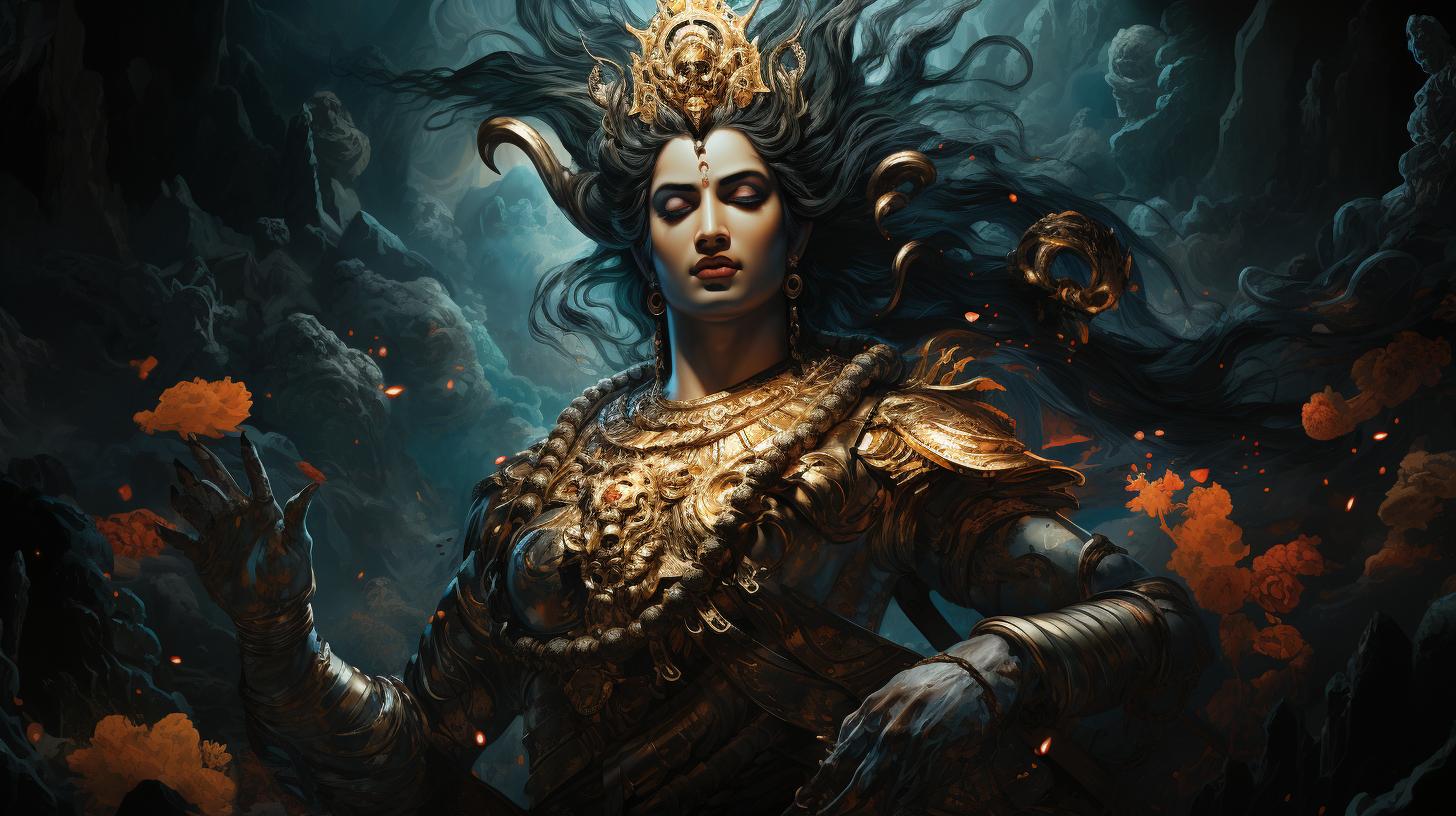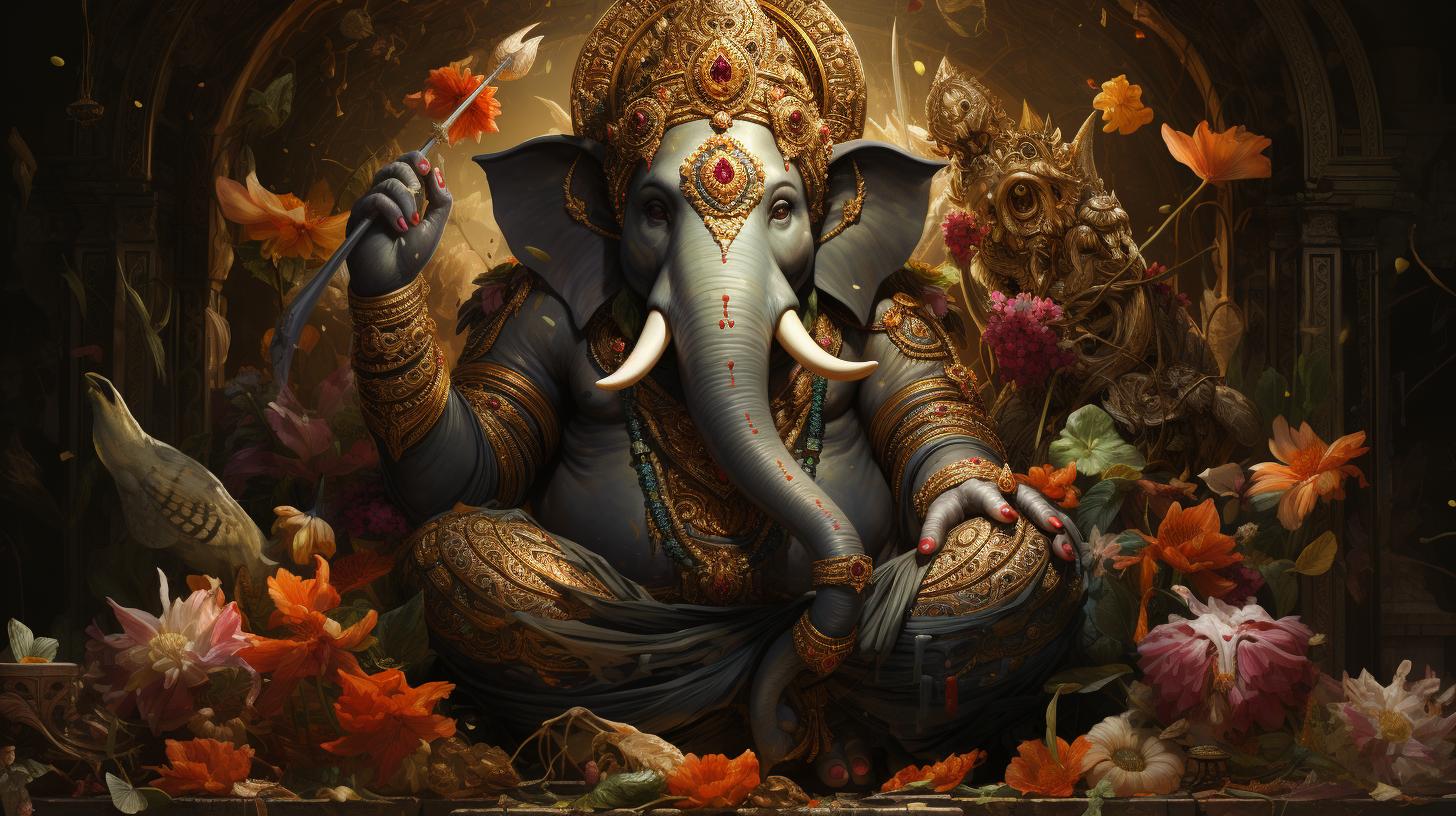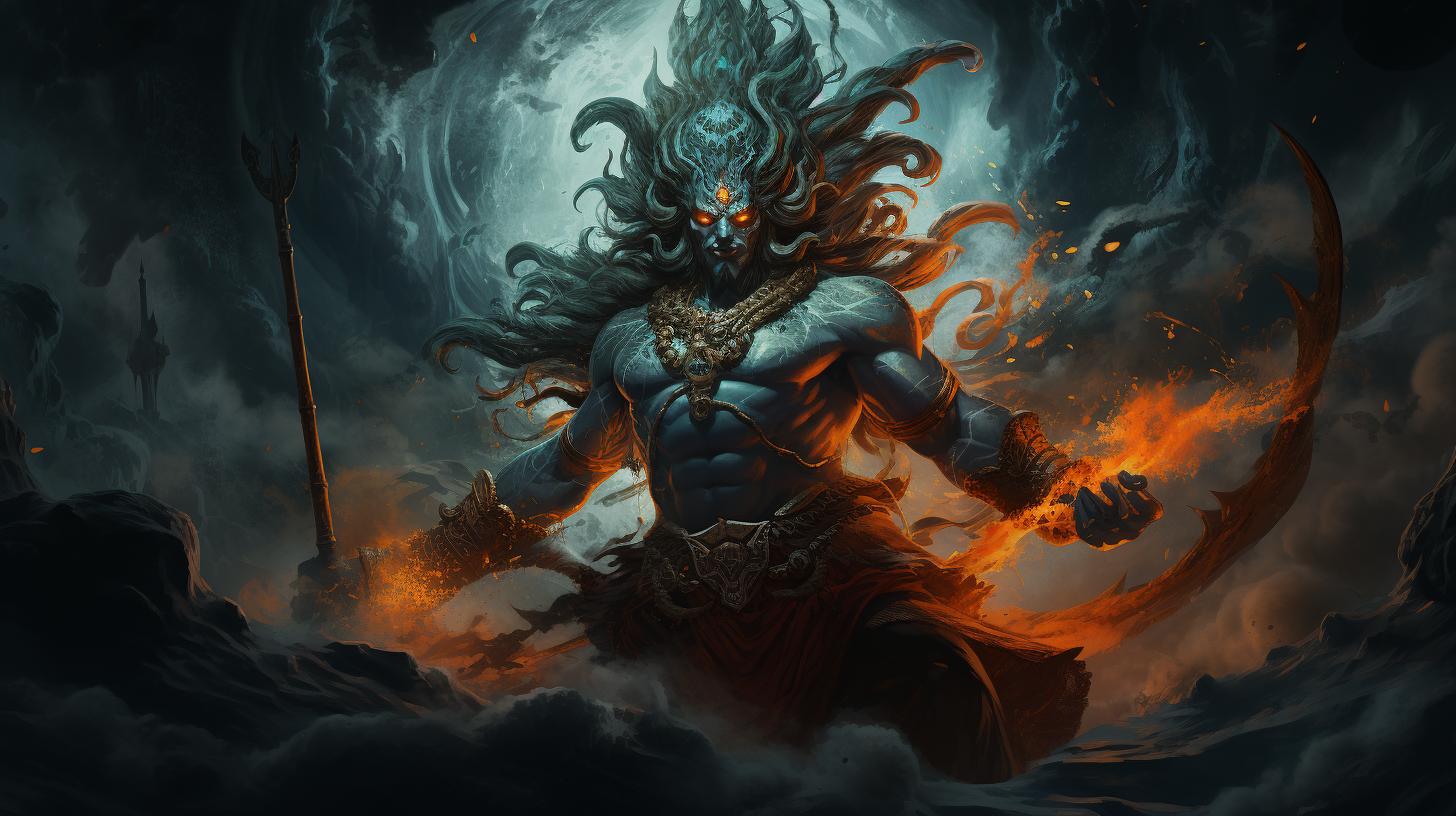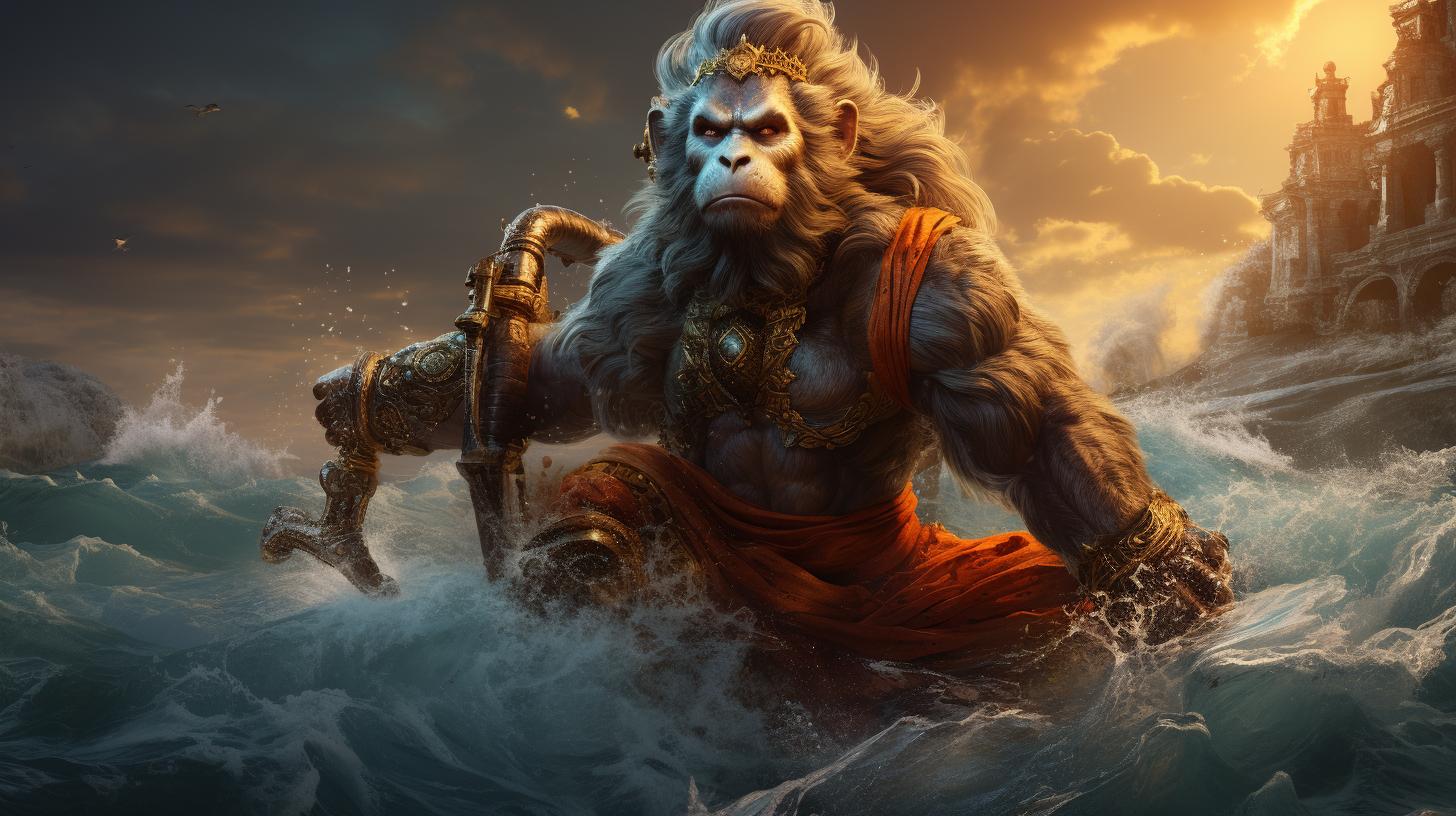Narasimha God Story: The Powerful Tale of Goodness Triumphing Over Evil
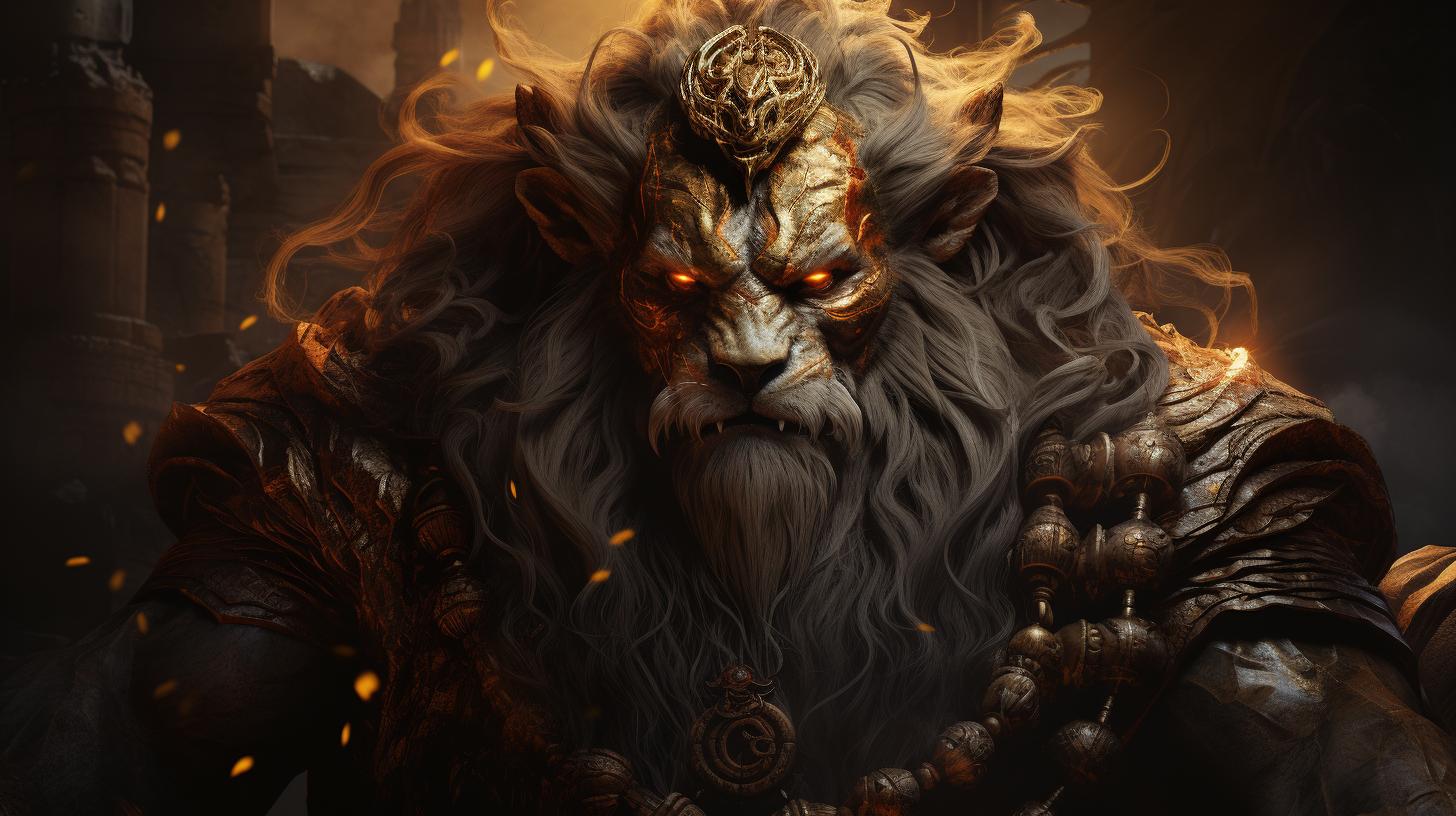
Narasimha god story is a powerful tale of Lord Vishnu’s fourth incarnation, portraying the triumph of goodness over evil. It revolves around the demon king Hiranyakashipu’s revenge against Vishnu, leading to Narasimha’s divine intervention.
The story symbolizes the importance of devotion, faith, and the restoration of righteousness. Narasimha’s representation can be observed in temples, and his story is celebrated during the festival of Holi. This article delves into the origin, significance, and lessons derived from Narasimha’s captivating narrative in Hindu mythology.
It also explores the impact and relevance of his story in today’s context.
Etymology and Origins
The origins of the Narasimha god story can be traced back to ancient Hindu scriptures and mythology. The word “Narasimha” is a combination of two Sanskrit words: “Nara,” which means human, and “Simha,” which means lion.
This name aptly describes the half-lion, half-human form that Lord Vishnu takes in this incarnation.
In Hindu mythology, Lord Vishnu is believed to have ten avatars (incarnations) that manifest in various forms to restore balance and righteousness in the world.
Narasimha is the fourth avatar, and his story is an essential part of Hindu religious lore.
The earliest references to Narasimha can be found in ancient texts like the Vedas and the Puranas.
These scriptures narrate the birth and purpose of Narasimha, as well as the events that led to his manifestation. The story holds great significance in Hinduism as it exemplifies the eternal struggle between good and evil.
Stories of Narasimha’s valor, his divine intervention, and his victory over evil have been passed down through generations, resonating with devotees and inspiring acts of faith and devotion.
The tale of Narasimha, with its rich historical and cultural roots, continues to captivate believers and provides profound lessons about morality, righteousness, and the power of unwavering devotion.
Narasimha: The Fourth Incarnation of Lord Vishnu
The Narasimha avatar is considered the fourth incarnation of Lord Vishnu, one of the principal deities in Hinduism. This divine manifestation combines the characteristics of both a lion and a human, symbolizing a divine being with immense power and strength.
In Hindu mythology, each incarnation of Vishnu is believed to serve a specific purpose in the cosmic order, and Narasimha appeared to restore righteousness and eliminate religious persecution.
Unlike other avatars of Vishnu, Narasimha has a distinct appearance with a lion’s head and a human-like body.
This unique form was chosen by Lord Vishnu to counter the demon king Hiranyakashipu, who had obtained a boon of invulnerability against humans, animals, and gods.
By assuming the form of Narasimha, Vishnu could bypass the demon king’s blessings and bring an end to his reign of terror.
Hiranyakashipu, driven by his hatred for Vishnu due to the death of his demon brother, embarked on a path of power and sought to avenge his brother’s demise. However, he underestimated the strength of Narasimha, and this led to his eventual downfall.
With razor-sharp claws, Narasimha tore apart Hiranyakashipu’s abdomen, vanquishing the demon king and establishing the victory of good over evil.
The story of Narasimha highlights the importance of faith, devotion, and the ultimate power of righteousness.
It teaches us that even the mightiest of demons cannot prevail against the divine forces representing goodness and justice.
Story of Hiranyakashipu: The Demon King’s Revenge
In the captivating tale of the Narasimha god story, the central antagonist is Hiranyakashipu, the demon king driven by vengeance against Lord Vishnu. Hiranyakashipu’s animosity towards Vishnu stemmed from the death of his brother, Hiranyaksha, at the hands of the deity.
Consumed by hatred and a thirst for retribution, Hiranyakashipu dedicated himself to a relentless pursuit of power and immortality.
Through rigorous penance and unwavering dedication, Hiranyakashipu was eventually granted a boon by Lord Brahma. He cunningly requested protection from death by any known creature, both human and animal, and within buildings and in the open air.
Filled with hubris, he believed himself to be invincible and beyond the reach of any divine retribution.
Embracing his newfound powers and immortality, Hiranyakashipu unleashed a reign of terror, persecuting those who opposed him and challenging the gods themselves.
Encouraged by his unchecked tyranny, chaos and corruption permeated the realm, overshadowing righteousness and virtue.
Witnessing the growing plight of the world and the desperate cries of the tormented, Lord Vishnu resolved to restore order and uphold righteousness.
Taking on the form of Narasimha, a fearsome creature with the head of a lion and the body of a man, he emerged to confront Hiranyakashipu.
In a fierce battle, Narasimha pierced the demon king’s formidable defenses and ultimately slew him, ripping apart his stomach with his razor-sharp claws.
The victory of Narasimha over the malevolent Hiranyakashipu symbolizes the triumph of good over evil and the divine intervention that restores balance and justice in the universe.
This thrilling chapter of the Narasimha god story teaches us valuable lessons about the consequences of unchecked power, the destructive nature of pride and ego, and the inevitability of divine justice.
It reminds us of the importance of adhering to righteous principles and standing against oppression and injustice.
Narasimha’s Birth and Purpose
Narasimha, the fourth incarnation of Lord Vishnu, was born with a divine purpose to restore harmony and righteousness in the universe. According to ancient Hindu scriptures, Narasimha emerged as a half-lion, half-human form to eliminate the wicked demon king Hiranyakashipu.
The story goes that Hiranyakashipu, driven by his thirst for power and vengeance against Lord Vishnu, had acquired a boon that made him virtually indestructible. Filled with arrogance, he unleashed a reign of terror and oppression, persecuting devotees and suppressing righteousness.
Vishnu, in response to the prayers of the gods and the pleas of the suffering, chose to manifest as Narasimha to end Hiranyakashipu’s tyrannical rule. This extraordinary incarnation was meant to deliver justice, restore balance in the world, and reinstate the principles of dharma or righteousness.
Narasimha’s birth was exceptional, for he appeared neither in a conventional human manner nor from the womb of a mother. Instead, he emerged from a pillar in Hiranyakashipu’s palace during twilight, which fulfilled the conditions specified in the boon that Hiranyakashipu had obtained.
This unique form of Narasimha, with the body of a lion and the head of a human, perfectly symbolized the confluence of divine power and animal instinct, reminding humanity of the eternal struggle between good and evil.
Narasimha’s birth signaled a profound turning point, a cosmic intervention to restore order and justice.
The purpose of Narasimha’s incarnation was not only to vanquish Hiranyakashipu but also to remind humanity of the consequences of arrogance, ego, and the abuse of power.
The legend of Narasimha serves as a timeless lesson about the importance of upholding righteousness and the triumph of good over evil.
Hiranyakashipu’s Quest for Immortality
Hiranyakashipu, the powerful demon king and brother of Hiranyaksha, harbored deep resentment towards Lord Vishnu for the death of his sibling. Filled with anger and a thirst for revenge, he decided to engage in rigorous penance to obtain a boon from Brahma, the creator of the universe.
His ultimate desire was to become immortal, believing that this would grant him invincibility and the ability to conquer even the gods.
With unwavering determination, Hiranyakashipu subjected himself to stringent austerity for thousands of years.
He meditated in secluded places, remaining steadfast in his quest for ultimate power. The intensity of his penance caught the attention of the gods, who feared the consequences of Hiranyakashipu’s wish being granted.
Brahma, recognizing Hiranyakashipu’s dedication, appeared before him and granted him a boon. However, due to the nature of his request, Brahma had to place certain limitations on the granting of immortality.
Hiranyakashipu could not be killed by any man or god, either inside or outside a dwelling, during day or night, using any weapon or tool known to exist.
Filled with a sense of invincibility, Hiranyakashipu returned to his kingdom and unleashed a reign of terror upon the world.
He demanded that all his subjects worship him as the supreme deity and rejected any form of devotion to Vishnu. His ego and arrogance knew no bounds, as he believed that he had successfully outwitted not only the gods but also the cycle of life and death.
Hiranyakashipu’s quest for immortality brought chaos and devastation to the world, as evil and injustice reigned under his tyrannical rule. His refusal to acknowledge the divine powers of Lord Vishnu sparked the need for divine intervention to restore balance and righteousness.
Narasimha’s Divine Intervention
As the story goes, Hiranyakashipu, the demon king consumed by revenge, had obtained a boon of immortality from Lord Brahma. Empowered by this blessing, he wreaked havoc on the earth, causing suffering and persecution of the righteous.
Recognizing the growing imbalance and the need to restore order, Lord Vishnu took on the form of Narasimha, a unique and formidable blend of a lion and a human.
With his divine intervention, Narasimha emerged to confront Hiranyakashipu and put an end to his tyrannical reign.
The fierce and wrathful deity engaged in an intense battle against the demon king, tearing apart his stomach with his sharp claws and ultimately bringing about his demise.
The story of Narasimha’s divine intervention serves as a symbol of the victory of good over evil.
It reminds us of the importance of divine justice and the consequences that await those who misuse power and oppress the weak. Narasimha represents the unwavering strength and determination needed to restore righteousness in the face of adversity.
Devotees often draw inspiration from this tale, finding solace and courage in the belief that with unwavering faith in the divine, even the most formidable evil can be vanquished. Narasimha’s intervention serves as a powerful reminder that the forces of righteousness will always prevail, regardless of the challenges encountered along the way.
Throughout Hindu temples, iconic representations of Narasimha can be found, depicting his ferocious form and the significant role he plays in the pantheon of deities. His story is commemorated with great enthusiasm during the festival of Holi, where devotees celebrate his triumph over evil and express their devotion through vibrant festivities.
Today, the divinely guided intervention of Narasimha continues to resonate within the hearts and minds of millions, reminding them of the importance of standing up against injustice and upholding the principles of dharma.
The story of Narasimha serves as a timeless testimony to the power of divine intervention and the triumph of righteousness over malevolence.
Symbolism and Lessons from the Narasimha God Story
The Narasimha god story holds rich symbolism and imparts valuable lessons that transcend time. Let’s explore some of the key symbols and teachings derived from this divine narrative:
- Narasimha: The Half-Human, Half-Lion Form
- Triumph of Good over Evil
- Hiranyakashipu’s Ego and Arrogance
- Narasimha’s Divine Intervention
- Devotion and Faith
- The Power of Sacrifice
The embodiment of Narasimha, being half-lion and half-human, symbolizes the convergence of the animalistic and divine qualities within each individual.
It represents the duality of nature and serves as a reminder to embrace both our gentle and fierce aspects.
The Narasimha god story demonstrates the victory of righteousness over wickedness.
It emphasizes that no matter how powerful evil forces may seem, they are ultimately destined to be vanquished. This inspires hope, resilience, and faith in the face of adversity.
Hiranyakashipu’s character embodies ego, arrogance, and a belief in his own invincibility.
It serves as a poignant reminder of the destructive consequences of unchecked pride. The story teaches the importance of humility and the perils of becoming consumed by one’s own ego.
The intervention of Narasimha showcases the divine’s commitment to protecting righteousness and restoring balance in the world.
It signifies that whenever the forces of evil threaten to disrupt the cosmic order, a higher power will arise to restore justice.
The story highlights the significance of unwavering devotion and faith in the divine.
Prahlada, Hiranyakashipu’s son and a staunch devotee of Vishnu, serves as an example of unshakeable faith even in the face of extreme adversity. It teaches us to trust in something greater than ourselves, transcending the challenges we encounter in our journey.
The story emphasizes the power of sacrifice to uphold righteousness. Narasimha’s incarnation resulted from the selfless sacrifice of Prahlada’s mother, who willingly surrendered her life to protect her unborn child.
This selflessness serves as a lesson in the importance of sacrifices made for virtuous causes.
The Narasimha god story intertwines these symbols and teachings to provide a profound understanding of the eternal struggle between good and evil, the significance of devotion, and the power of divine intervention.
By reflecting on these lessons, we can glean wisdom and inspiration that hold relevance in our lives even today.
Narasimha’s Representation in Temples and Festivals
The story of Narasimha, the half-lion, half-human incarnation of Lord Vishnu, holds great significance in Hindu mythology. This divine narrative is not only celebrated through storytelling but also depicted in various temples and observed during festivals.
1. Iconic Depictions:
- Temples dedicated to Narasimha often feature intricate sculptures and artworks portraying his unique form, with the body of a lion and the face of a human.
- These representations symbolize the power, strength, and ferocity of Narasimha in his divine mission to vanquish evil forces.
2. Celebrations during Holi:
- The festival of Holi, widely celebrated across India, holds a special significance for devotees of Narasimha.
- During this vibrant festival, people reenact the victory of Narasimha over the demon king Hiranyakashipu through lively performances and rituals.
- Devotees come together to sing songs, dance, and express their devotion, embodying the triumph of good over evil.
3. Devotional Practices:
- Those who revere Narasimha engage in various devotional practices, such as reciting sacred mantras, offering flowers, and performing aarti (rituals with lamps) in temples.
- These acts of devotion aim to seek Narasimha’s blessings, protection, and guidance in their spiritual journey, while also strengthening their connection to the divine realm.
In conclusion, the representation of Narasimha in temples and the festivities surrounding his story during Holi highlight the cultural and spiritual significance attributed to this powerful deity.
The vivid depictions and celebratory rituals serve as a constant reminder of the enduring legacy of Narasimha and his role in inspiring faith, courage, and the triumph of righteousness.
The Significance of Narasimha in Hinduism
In Hinduism, the story of Narasimha holds great significance and is considered a profound tale that imparts various teachings and life lessons.
The narrative of Narasimha highlights the triumph of righteousness over evil and the importance of unwavering devotion and faith.
Narasimha showcases the idea that even the most formidable evil forces can be defeated by divine intervention and the power of good.
The ferocious form of Narasimha, half-lion and half-human, symbolizes the divine power that can manifest to protect righteousness and restore balance in the universe.
Devotees believe that worshipping Narasimha can bestow courage, strength, and protection against negative forces.
Narasimha is revered as a fierce deity who eliminates obstacles and guards his devotees from harm. His devotees seek his blessings for overcoming challenges and attaining spiritual growth.
Narasimha’s presence is vividly depicted in temples dedicated to Lord Vishnu throughout India and other parts of the world.
The sculptures and paintings adorning these temples portray Narasimha in his iconic half-lion, half-human form, exuding power, ferocity, and divine grace.
During religious festivals like Holi, the Narasimha god story is celebrated with zeal and enthusiasm.
Devotees reenact key episodes of the story through drama, dance, and music, immersing themselves in the divine essence of Narasimha and his teachings.
The story of Narasimha resonates deeply within the hearts of Hindus, reminding them of the eternal fight between good and evil and the need to uphold righteousness in their lives.
It reinforces the belief that devotion, faith, and unwavering commitment to dharma can conquer even the most formidable challenges.
In modern times, Narasimha’s narrative continues to inspire individuals to embrace virtues like courage, resilience, and unwavering faith in the face of adversity.
The teachings derived from the Narasimha god story serve as a guiding light, imparting wisdom and fostering spiritual growth.
Mythological References and Associated Deities
The fascinating story of Narasimha god holds significant mythological references and delves into various associated deities within Hinduism. Let’s explore some of the key elements:
- Vishnu: Narasimha is considered the fourth incarnation of Lord Vishnu, who is one of the principal deities in Hinduism.
Vishnu represents the preservation aspect of the universe and is revered for maintaining cosmic balance.
- Prahlada: As part of the Narasimha god story, Prahlada plays a vital role. He is the son of Hiranyakashipu, the demon king, and a devout follower of Vishnu. Despite facing persecution by his own father, Prahlada remains unwavering in his faith, becoming a symbol of devotion and righteousness.
- Goddess Lakshmi: Lakshmi is the divine consort of Vishnu and is often portrayed alongside Narasimha in artwork and temple imagery.
As the goddess of wealth, fortune, and prosperity, she represents the nurturing aspect of divinity.
- Bhakti Devi: Bhakti Devi symbolizes pure devotion and is often associated with the story of Narasimha.
She highlights the power of unwavering faith and illustrates the transformative effects of surrendering oneself to a higher power.
- Rama and Hanuman: The epic tale of Ramayana introduces two significant deities, Rama and Hanuman, who are closely linked to Narasimha.
Lord Rama, considered the seventh avatar of Vishnu, displays valor and heroism, while Hanuman, his devoted disciple, represents loyalty, devotion, and strength.
These deities and their interconnected stories bring depth and richness to the narrative of Narasimha god, symbolizing different aspects of divinity and exemplifying various virtues within Hindu mythology.
The Impact and Relevance of Narasimha’s Story Today
The timeless tale of Narasimha’s courageous triumph continues to resonate with people across generations, reflecting its enduring impact and relevance in today’s world. As we delve into the significance of Narasimha’s story, we discover valuable lessons that can be applied to our own lives and society.
1. Overcoming Adversity: Narasimha’s story teaches us the importance of confronting and conquering adversity. In the face of evil forces, Narasimha emerges as a potent symbol of resilience, inspiring individuals to rise above challenges and protect righteousness.
2. Restoring Justice: The narrative of Narasimha highlights the urgent need to restore justice in a world plagued by injustice. This divine incarnation reminds us that standing up against oppressors is crucial, and that righteousness and truth must always prevail.
3. Power of Devotion: Narasimha’s story emphasizes the significance of unwavering devotion and faith. It teaches us that dedicating ourselves to a higher cause, and nurturing a deep connection with the divine, can empower us to overcome obstacles and achieve spiritual growth.
4. Symbolism and Allegory: Narasimha’s hybrid form of half-lion and half-human represents the coexistence of power and compassion. This symbolism serves as a reminder that strength should be guided by empathy and used responsibly to protect the weak.
5. Cultural Celebrations: The celebration of Narasimha’s story during festivals like Holi is a testament to its enduring cultural significance. These festivities bring communities together, fostering unity and reinforcing the values taught by Narasimha’s remarkable tale.
6. Artistic Representation: The artistic depiction of Narasimha in temples and other religious sites showcases the widespread respect and devotion for this divine incarnation. These representations not only capture the essence of the story but also serve as a visual reminder of the inner strength we can draw upon.
7. Moral Guidance: Narasimha’s story offers moral guidance for individuals and societies alike. Its teachings promote compassion, justice, courage, and the pursuit of righteousness, providing a moral compass to navigate the complexities of the modern world.
Today, as we reflect on Narasimha’s story, we are reminded of the eternal struggle between good and evil. The tale’s relevance stretches far beyond its ancient origins, serving as a source of inspiration and wisdom in a world that continues to grapple with similar challenges.
Narasimha’s legacy continues to shine brightly, guiding us towards a better future.
.











